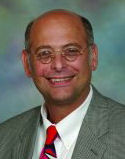Write it up
The source of my tension on this particular day was Karin, the incredibly intense fourth-year medical student rounding with me.
It was the first day of a new rotation schedule on the hospital medicine service, and a medical student was shadowing me. Usually this was energizing and enjoyable, and this day should have been no exception. The service was fairly light, with only a dozen patients.
I scanned the list for repeat offenders, and saw the typical selection of cases, combined with a generous helping of zebras, cranks and recidivists. Still, I felt a tension building between my shoulder blades—what I usually felt before a tough call night or a phone call from my mother-in-law. This was something else, though. The source of tension on this particular day was Karin*, the incredibly intense fourth-year medical student rounding with me.

Karin was a visiting medical student. Generally these students kept a low profile the first week, learning our electronic health record and trying to not get lost in the labyrinthine bowels of our facility. But this was a different kettle of fish. Karin immediately began to ask pointed and difficult-to-answer questions. She demonstrated a profound knowledge of the pertinent literature and made eye contact with everyone from the patients to the janitors—in essence, a real pain. When it was time to take the elevator, she suggested we take the stairs. Most worrisome of all, she said she didn't drink coffee.
We had finished with only three patients, and I was already thinking of reasons to get her to follow someone else for the week. Maybe I could contract a nice case of the 24-hour plague. After we left each room she'd look at me and say, “What an interesting case. We should write it up.” I encouraged her; at this point I had nothing to lose. A patient with amyloidosis and a big tongue? “Let's write it up.” Sarcoidosis and a scalp that looked like raw chopped meat? “Let's write it up.” An elderly lady who had fallen and could not get up—she even wanted to write that one up. Either she was manic, or a hyper-achiever, or most likely, both.
Towards the end of the day, she had exhausted me. I had been on my best behavior as a role model and a source of wisdom (limited though I was in this regard). I'd used up all my pearls, mnemonics and anecdotes in one day. What I'd do tomorrow, I had no idea.
Near the end of rounds, Karin suddenly became more subdued. “Getting one of my headaches,” she said in response to my concern. She looked ill. We headed towards the stairwell, when suddenly she grabbed her forehead, pitched forward and tumbled down the stairs.
I called a “Code 45” as soon as I realized she was unconscious and that her femur was poking through her pants leg.
Karin ended up intubated in the MICU. She had a lumbar puncture and no signs of infection. She had a CT of her head, then an MRI, then an MR venogram. The diagnosis was finally made: cavernous sinus thrombosis. Her femur had a compound fracture and then a fat embolism. Her ICU course became increasingly complex. Heparinized, she developed both HIT and hyperkalemia. Her central line became infected and she was treated with vancomycin. Use of this antibiotic led to the development of stiff-man syndrome. Her hypercoagulable work-up revealed that she had both protein C deficiency and factor V Leiden mutation. She then had ATN, SIADH and ARDS.
I spent many days in the ICU sitting by her bed. Her family was in Pakistan, and the room was empty. I brought flowers. It was too sad to see her there, intubated and alone. I became more and more involved with her case. The team would round and talk to me like I was a family member. After almost two weeks of intensive care, she began to improve, and eventually she was extubated.
I was sitting by her bedside as she was suctioned and cleaned. She slept. I thought about her medically complex ex-perience. I had grown to think of her like a family member during those long hours.
The next morning I came to see her, and she was awake and smiling. She looked at me. “Tell me, Dr. Newman, what happened to me?”
Nobody had explained anything to her. Typical. I decided that I would. I told her about the headache, the fall, the fracture, the embolism, the hypercoagulable state, the cavernous sinus thrombosis, the drug reactions and complications.
Karin looked at me and smiled. “Let's write it up,” she said.



